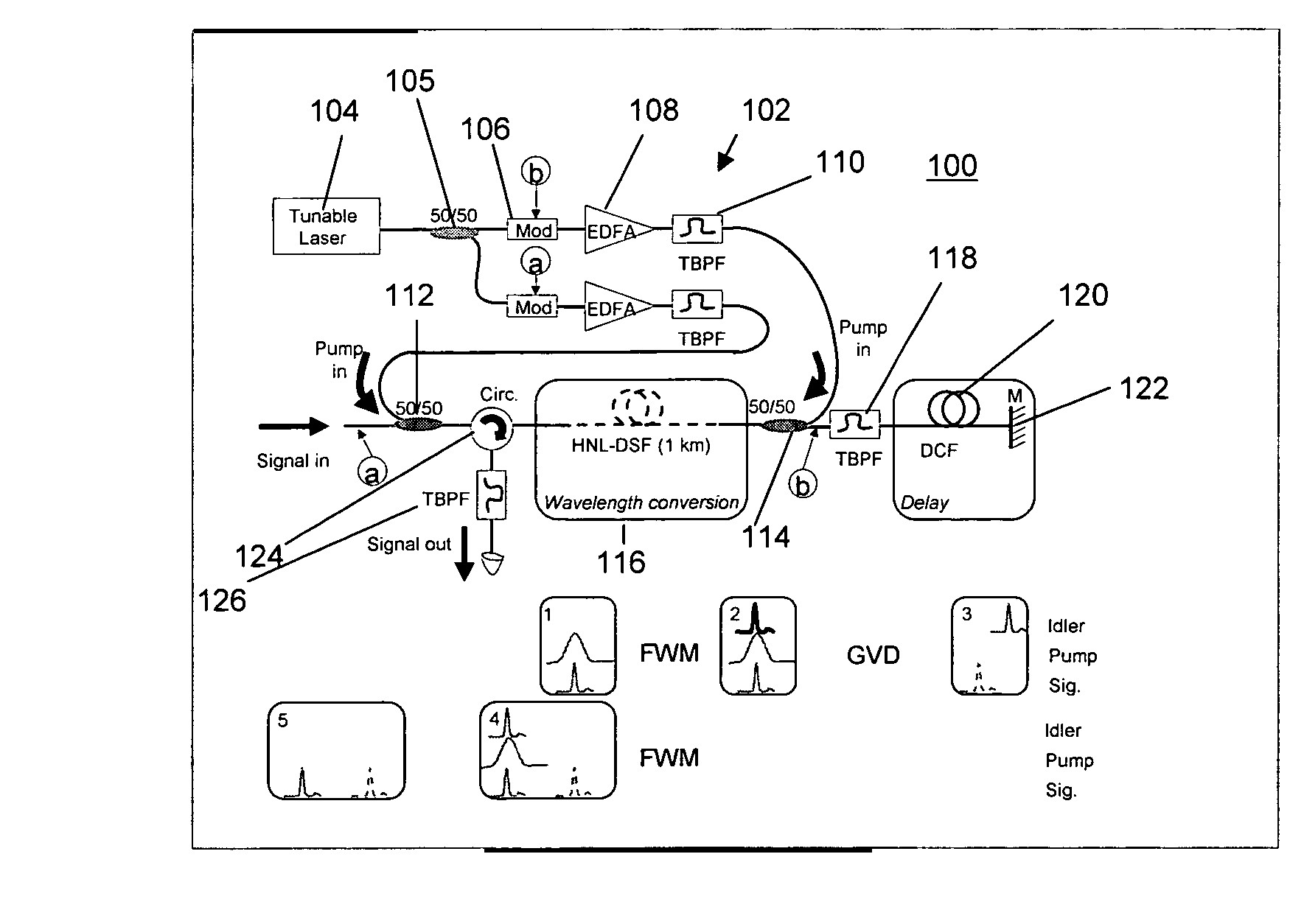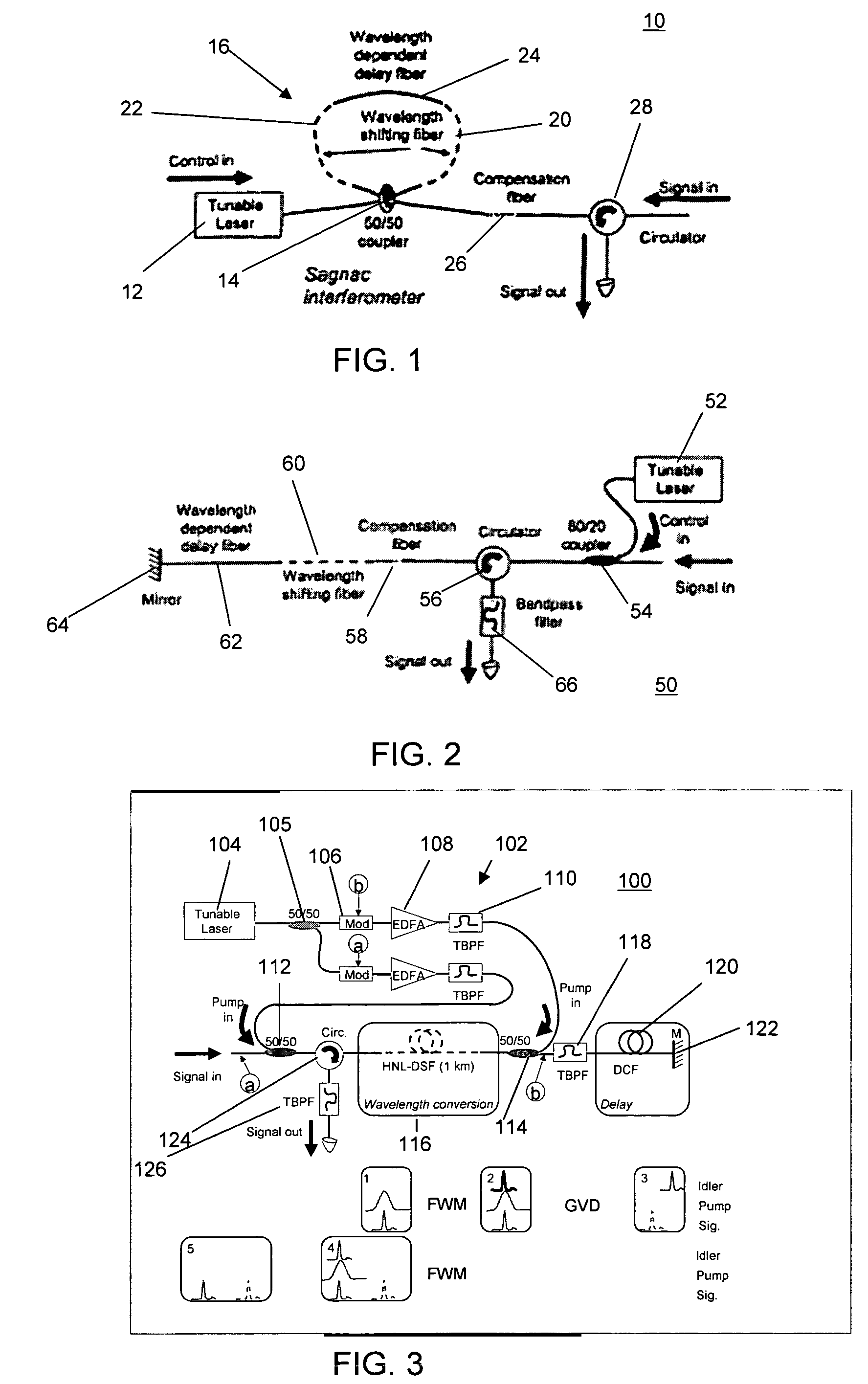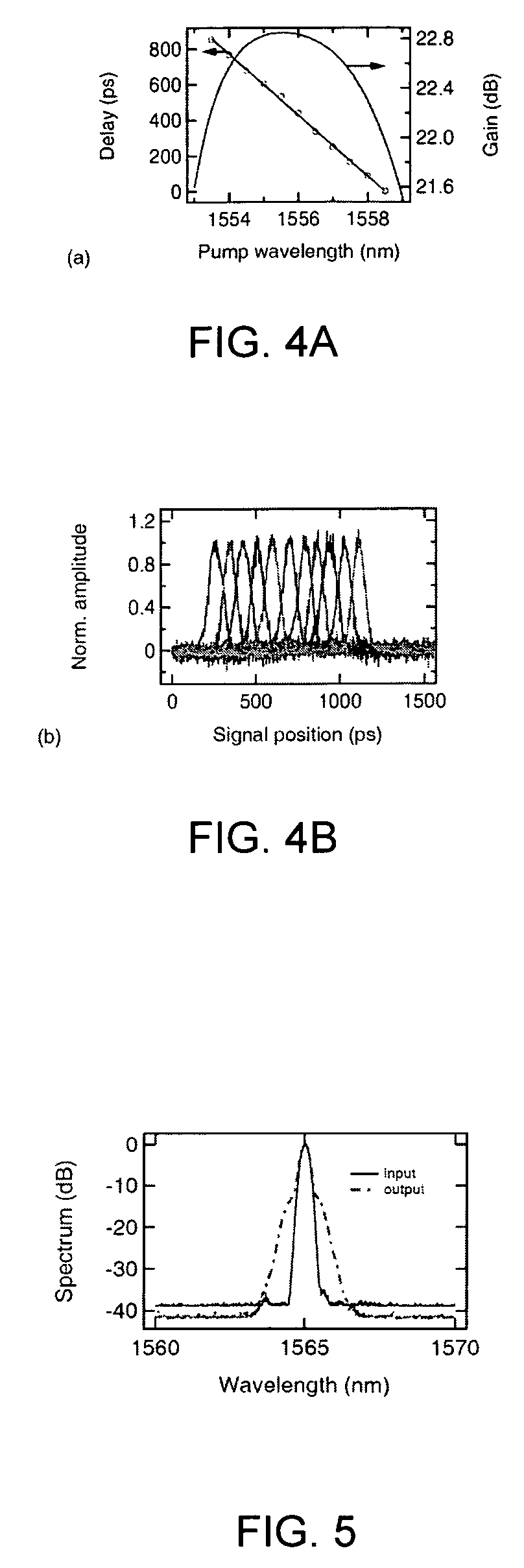All-optical, continuously tunable, pulse delay generator using wavelength conversion and dispersion
a generator and wavelength conversion technology, applied in the field of continuously tunable optical pulse delay generators, can solve problems such as conceptual complexity, speed of operation, and wavelength of operation, and achieve the effect of eliminating residual pulse distortion
- Summary
- Abstract
- Description
- Claims
- Application Information
AI Technical Summary
Benefits of technology
Problems solved by technology
Method used
Image
Examples
Embodiment Construction
[0018]As already noted, the present invention uses one or more linear or nonlinear-optical processes such as cross-phase modulation, cross-gain modulation, four-wave mixing or parametric mixing, combined with group-velocity dispersion for generating variable pulse delays. The delay is controllable by changing the wavelength and / or power of a control laser. FIGS. 1-3 illustrate 3 possible embodiments of such a device, each of which is an “all-optical” delay generator.
[0019]With reference first to FIG. 1, an all-optical delay generator 10 is shown in which a tunable laser 12 generates a control signal that is applied along with an input signal pulse to be delayed to 50 / 50 optical coupler 14 in a Sagnac interferometer 16. The Sagnac interferometer 16 includes first and second sections 20 and 22 of wavelength shifting fiber (e.g. HNL-DSF); and a section of dispersive delay inducing fiber 24 (e.g. DCF). In this embodiment, wavelength conversion or shifting (fiber 20), wavelength dependen...
PUM
| Property | Measurement | Unit |
|---|---|---|
| zero-dispersion wavelength | aaaaa | aaaaa |
| zero-dispersion wavelength | aaaaa | aaaaa |
| wavelength | aaaaa | aaaaa |
Abstract
Description
Claims
Application Information
 Login to View More
Login to View More - R&D
- Intellectual Property
- Life Sciences
- Materials
- Tech Scout
- Unparalleled Data Quality
- Higher Quality Content
- 60% Fewer Hallucinations
Browse by: Latest US Patents, China's latest patents, Technical Efficacy Thesaurus, Application Domain, Technology Topic, Popular Technical Reports.
© 2025 PatSnap. All rights reserved.Legal|Privacy policy|Modern Slavery Act Transparency Statement|Sitemap|About US| Contact US: help@patsnap.com



